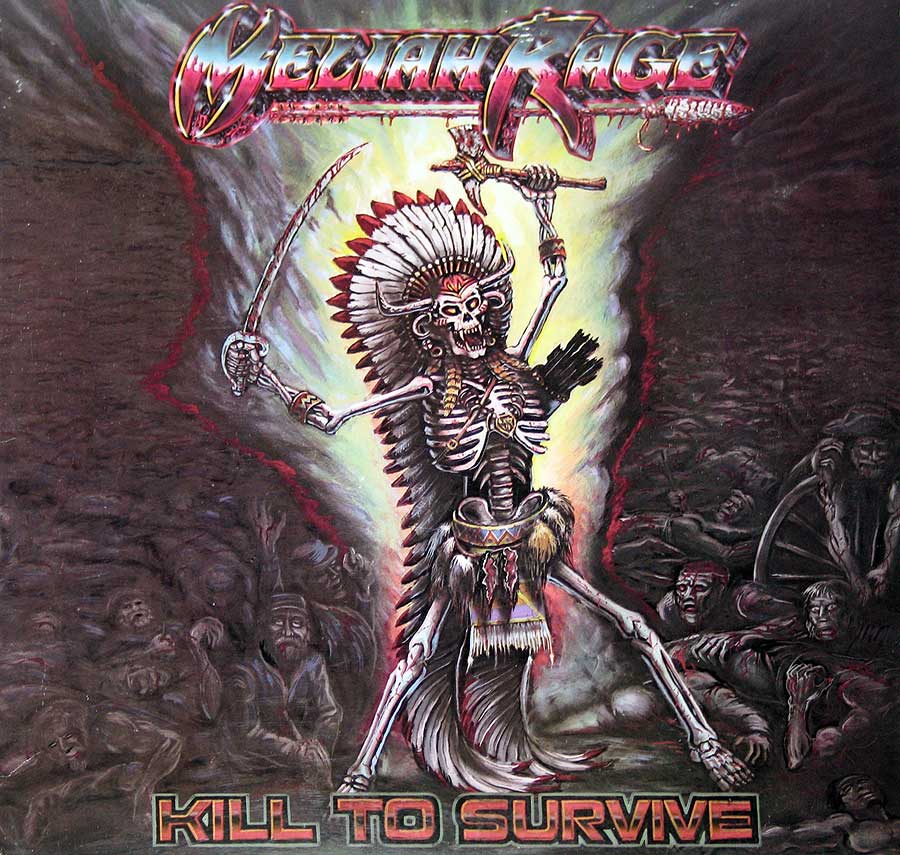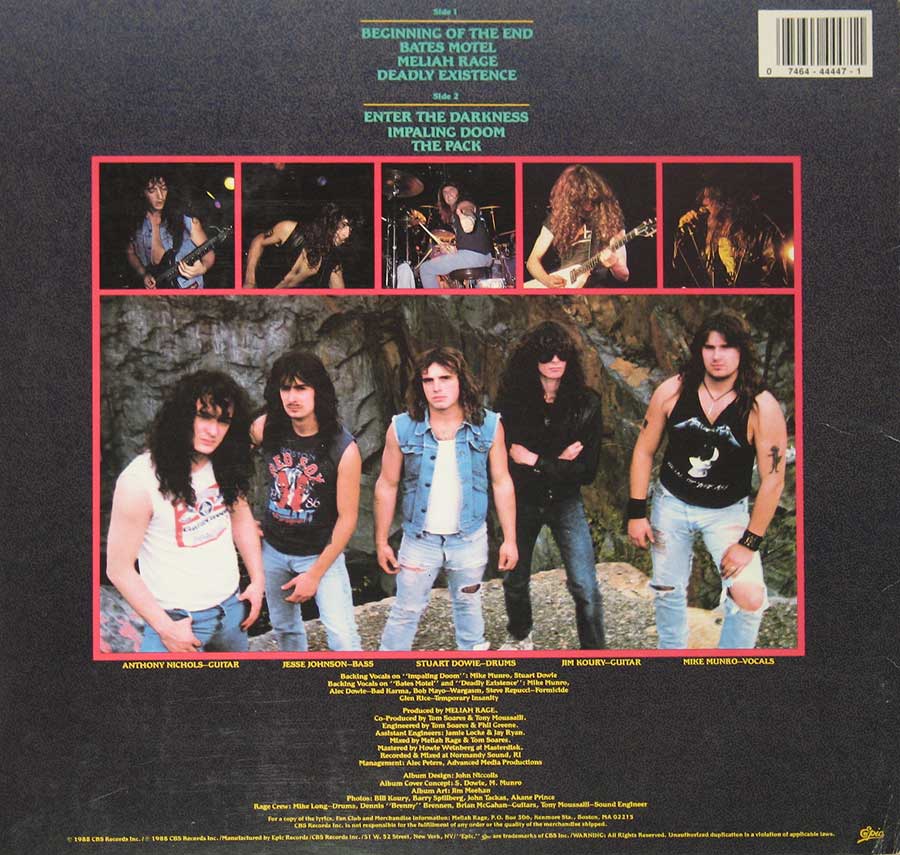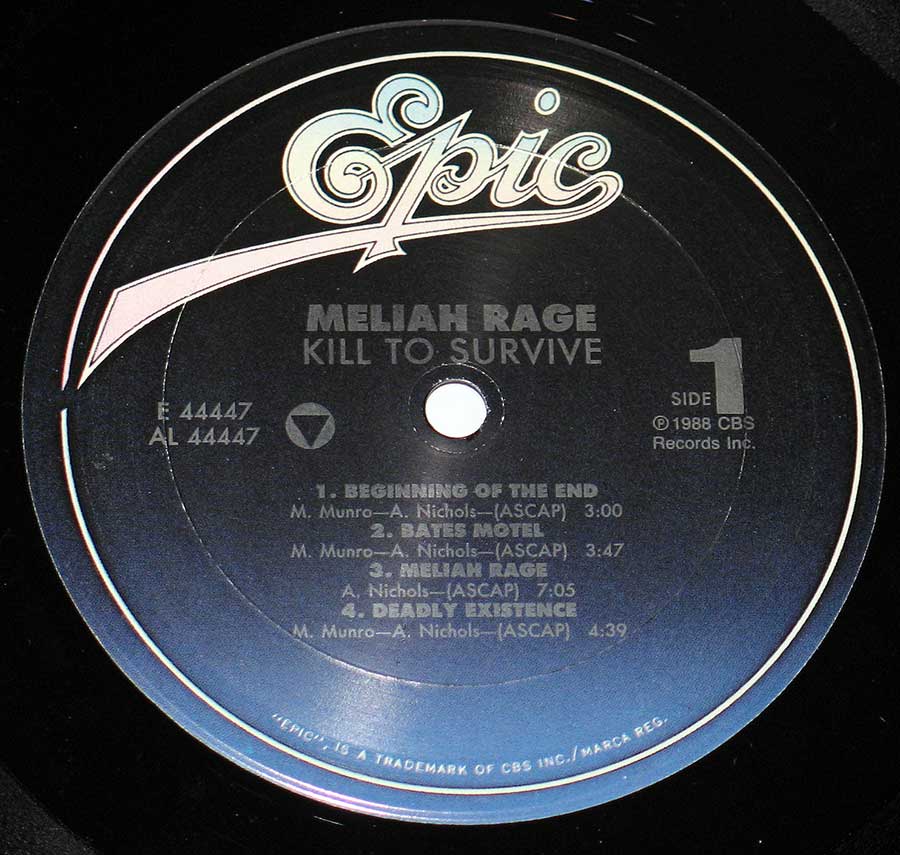In the heart of the thrash metal explosion of the late 1980s, amidst a whirlwind of guitar riffs and aggressive drums, emerged Meliah Rage's debut album, "Kill to Survive." Released in 1988, this 12" vinyl full-length stereo long-play gramophone record (as the format was fondly known) not only marked the band's entrance into the scene but also encapsulated the raw energy and unfiltered angst of the era.
A Sonic Snapshot of Thrash Metal
"Kill to Survive" was a pure distillation of thrash metal's core elements. The album was a relentless onslaught of fast tempos, aggressive guitar riffs, and furious drumming. Tracks like "The Pack Is Back" and "Bates Motel" showcased the band's technical prowess and raw intensity, while slower, more atmospheric pieces like "Enter the Darkness" revealed a deeper, darker dimension to their sound.
Lyrically, the album explored themes of social unrest, personal struggles, and the harsh realities of life. The lyrics were often confrontational and provocative, reflecting the rebellious spirit of the thrash metal movement.
Production and Presentation
The album was recorded at Normandy Sound in Warren, Rhode Island, with renowned producer Jim Morris at the helm. Morris, known for his work with Savatage and Crimson Glory, helped shape the band's raw sound into a polished product that retained its edge. The album's cover art, depicting a dystopian cityscape consumed by chaos, further emphasized the music's intensity and thematic depth.


